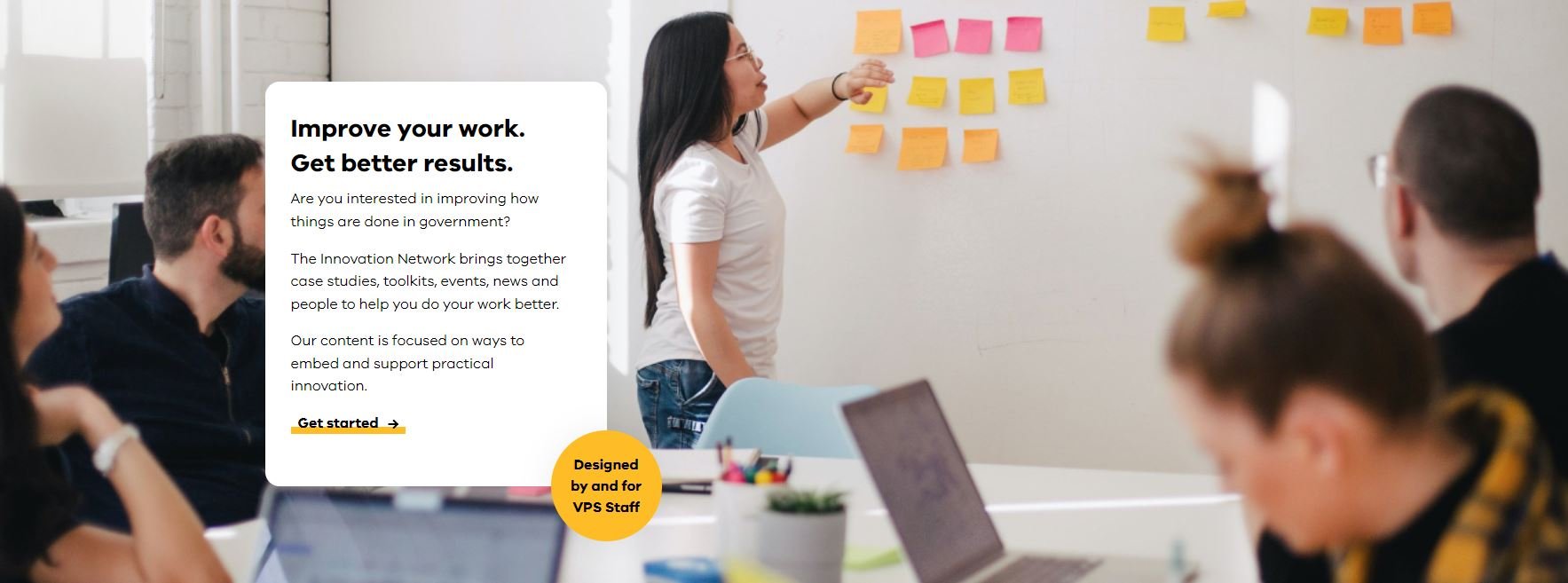Q&A with Mark Bayly, Senior Manager, Digital Channels at Ambulance Victoria
Everyone loves a ‘big idea’. At first glance, they’re exciting, energising and something you really want to get behind. But often that initial burst of energy wavers as the realities of getting buy-in, bringing others on the journey and making the case again, and again, and again (...and again) can stifle creative spirit.
How can you, and your innovative ideas, avoid meeting this frustrating end? Given the ever-increasing speed of digital, and heightened expectations among citizens for public sector agencies to stay ahead of their needs, Mark Bayly at Ambulance Victoria shares his experience and practical advice in a Q&A with his GDLN colleague, Roger Christie.
Roger Christie (RC): So Mark, what would you say are the 2-3 most important elements for success when getting buy-in on 'new' or innovative ideas in the public sector?
Mark Bayly (MB): I’ve always found three simple elements have the greatest influence on success.
- Firstly, demonstrate to the Executive the merit in your proposal and how it will support an organisation’s business goal. It sounds simple, but this link to the business goal is crucial.
- Secondly, draw on similar examples implemented by other organisations. Actually reach out to them and document their strategy and implementation process. Real-life examples with a bit of colour give leaders confidence.
- Finally, remember not every new or innovative idea will be right for the organisation you work for. You need to appraise the idea on its merits and question: is it the right idea for your organisation? New ideas are obviously not just about making an individual look good, because if you fail it can potentially have an impact on your personal or professional reputation.
RC: What about personal qualities - what would you say you as an individual need to ensure these ideas get over the line?
MB: If you honestly believe an idea will benefit an organisation, then you need to be persistent in your negotiations with the power brokers. It can take a long time to firstly convince the Executive team of the need for innovation and secondly implement the concept.
I certainly wouldn’t recommend being argumentative, bullish, or demonstrative. That won’t win friends. But, rather, be persuasive and demonstrate through tangible examples, to the point people can’t say no.
Finally, you need to be patient and be prepared to give and take on your ideas, keeping the bigger picture in mind, understanding that concepts evolve over time. It’s a little while ago now, but I know when I was working with Victoria Police and embarked on a mission to bring in a Messenger bot, it was several years of hard work, internal consultations and evidence that ultimately saw that program get over the line. It was the first of its kind at the time, and while I could’ve given up along the way, the benefits it’s delivered since then have been well worth it.
RC: That’s a fantastic example, Mark. And I know from our other chats, one of the things I love about that story is how it all ultimately went live on your actual birthday. I don’t think too many people can say their patience was rewarded with a Facebook Messenger cake…!
What about people about to start, or already going through a similar experience to your Messenger journey. What advice would you give to people in terms of working with leaders on these sorts of ground-breaking projects?
MB: My three C’s are consultation and collaboration delivers commitment, Roge. You cannot implement bold ideas or initiatives in isolation. And remember if you implement successfully, the naysayers will likely be the same group who will vocally embrace and advocate for the concept with everyone else.
RC: Who do you look to across industry for inspiration these days, Mark?
MB: In government, I like many of the ideas the Department of Premier and Cabinet have evolved. From their innovation network where you can join any number of groups that may be of interest, through to their work around Single Digital Presence. There is a real attempt to unite Government with a single brand identity.
RC: And where's the best place to start with any innovation, in your view? What's the most effective driver from your experience, and how do you find it?
MB: Of course there’s no one right or wrong answer to this, Roge. I find that looking outside of your own industry is the best way to stimulate future thinking. If you remain too insular, you’ll never understand what other organisations are implementing. Subscribe to as many digital think tanks as you can, and of course networking with peers is also beneficial.
One of the many groups you can learn from is the Government Digital Leaders Network (GDLN). You can read more insights and ideas from the group here on the GovComms Institute blog, or you can follow them on LinkedIn for regular updates.
About the Author
Roger Christie is the Founder & Managing Director of Propel – a multi award-winning consultancy that helps leaders and organisations build purposeful digital brands. For more than fifteen years, Roger has partnered with government, corporate and NGO ...


